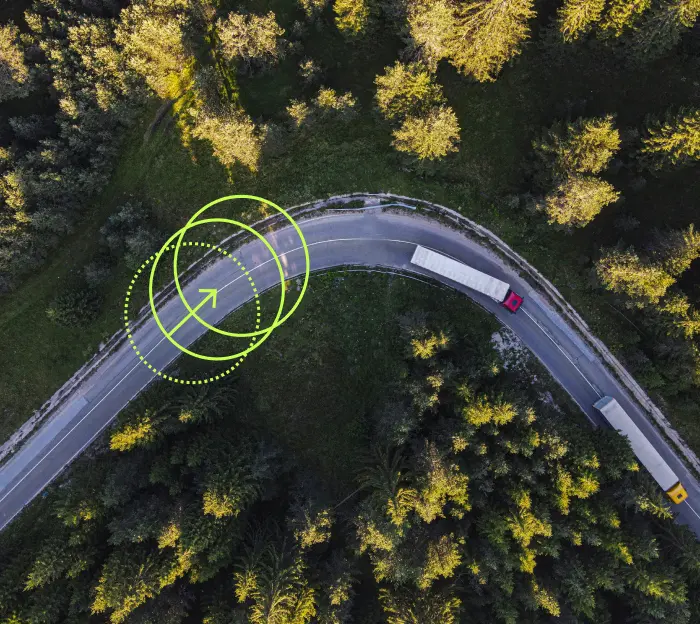
Taking pride in your work is a vital trait for professionals in all fields. It is especially crucial for drivers working in commercial and private fleets, as they directly impact the company’s risk level, as well as public safety and well-being.
Like skilled craftsmen, professional drivers strive to demonstrate their value and earn recognition for their skills and safety milestones. They also never want to be at the bottom of the performance chart.
The natural motivation to perform well can quickly fade if drivers see their employers managing data inconsistently. They feel discouraged when management systems fail to match safety data with company policies, which also creates legal risks. Trial lawyers are skilled at highlighting the gaps between what a fleet claims to believe and how it enforces its policies.
One of the most effective ways to enhance driver performance is to identify and address behavioral changes promptly. While disciplinary actions can sometimes be necessary, the focus should be on systems that help drivers manage their actions themselves by providing insights, incentives, and resources for improvement.
Let’s examine four specific types of high-risk driving behaviors that can be addressed effectively with e-learning solutions.
- Speeding: Stop Risk in Its Tracks
Speeding is among the most hazardous driving behaviors because it reduces reaction time and increases stopping distances, both of which exacerbate the severity of crashes.
In 2023, the NHTSA reported that speeding accounts for 29% of all traffic fatalities and approximately 23% of all fatal crashes involving large trucks.
Collecting speeding data is the easy part. The challenge is responding to incidents before drivers forget. With e-learning technology, fleets can tailor training to real-time event data, delivering a consistent message and setting clear expectations for improvement.
Technology can monitor driving behaviors and record event details for review and analysis. Top-performing fleets go beyond mere discipline by rewarding drivers for good behavior. This approach helps shift the focus from merely enforcing safety policies to cultivating a performance-oriented culture where drivers are engaged and take ownership.
- Aggression & Tailgating: Cool the Heat
Following too closely and engaging in other aggressive behaviors, such as cutting off vehicles or making rapid lane changes, pose serious safety risks. Often driven by stress, these actions are difficult to correct without systems that provide instant visibility and corrective measures.
AI-powered dashcams, advanced driver assistance systems (ADAS), and telematics platforms with integrated mobile apps can automatically monitor following distances and harsh braking. They can alert drivers in real time and record events to provide context and identify if these behaviors become habitual.
What makes these systems unique is their ability to remove bias. Along with data-driven coaching and e-learning systems, fleets can make sure safety policies are consistently followed, which ultimately results in lasting change as drivers take proactive steps to reduce risk.
- Distraction & Drift: Eliminate the Silent Risk
Distraction is one of the most overlooked yet dangerous driving behaviors. Whether caused by phones, food, or fatigue, inattention often leads to risky actions, such as rear-end crashes, lane drifting, and failing to yield to signals.
NHTSA data shows that in 2023, distracted driving caused an estimated 3,275 fatalities and 324,819 injuries, making up 13% of all traffic crashes. Lane departures, often due to inattention, are among the leading causes of driver-at-fault crashes.
Technology is helping fleets identify these subtle risks. AI dashcams can spot signs of distraction by monitoring head movements and eye positioning. Lane departure systems can provide immediate feedback to drivers when they drift, enabling them to make course corrections before it’s too late.
Using insights from these systems, companies can identify risks and create e-learning that targets the root causes of distraction: drivers losing focus on what matters most — returning home safely each day. This occurs when training is not only relevant to their work but also to their lives.
- Fatigue & Impairment: Expose What You Can’t See
Fatigue and impairment pose similar risks, including delayed reactions, poor decision-making, and unstable vehicle control. FMCSA data shows drowsiness is linked to tens of thousands of crashes each year, especially among long-haul drivers. Meanwhile, impairment from alcohol or drugs continues to lead to thousands of fatalities on U.S. roads.
Some fleets have adopted hair follicle testing for substance screening because it offers a longer detection window than urinalysis and reduces the chance of repeat violations. Once drivers are onboarded, fleets monitor hours-of-service compliance and conduct random drug tests. Still, ongoing insight and training are necessary to ensure drivers are in good physical and mental condition.
Various technologies can identify real-time risk signals such as swerving, rapid acceleration, and unusual braking patterns. Advanced systems can also detect fatigue through cues like eye closures or head nods.
At its core, combating fatigue and impairment involves more than just detection; it’s about shaping culture. Technology can alert and protect, but changing behavior and achieving lasting results in these areas requires consistent messaging and training to align policy with practice.
Culture Drives Change—Technology Makes It Possible
It’s time to close the gap between driver awareness and lasting behavioral change.
Driver behavior improves not just through enforcement but also when drivers are empowered. Actual change happens when fleets establish clear expectations, apply policies consistently, and offer personalized e-learning.
This approach transforms performance data from something drivers fear into something they find valuable. Technology can instantly identify risks, but without a culture that promotes openness, learning, and recognition, those alerts become just background noise.
Changing behavior isn’t about punishing mistakes but preventing them by giving every driver the training and encouragement to make the right decision in the moment.




